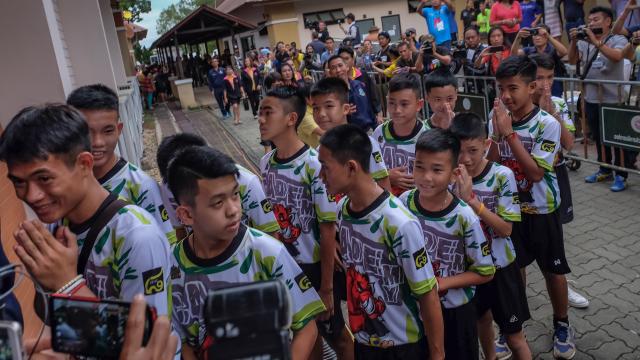Ketamine may have helped save the lives of the twelve boys and their soccer coach who were rescued from a Thai cave last summer.
The group was spelunking in the Tham Luang cave complex on June 23 when a sudden rainstorm flooded the caverns and trapped them inside. A group of divers saved the team two weeks later. The boys were strapped on to stretchers before the divers transported them through treacherous water-filled tunnels.
The medical team that assisted with the rescue of the group wrote a letter to the New England Journal of Medicine, which was published online Wednesday. According to their letter, rescuers gave the boys unspecified doses of ketamine.
Ketamine is used as a sedative, but it induces a trance-like state, so it’s also a popular party drug. The FDA recently approved a ketamine-like medication sedative for the treatment of depression.
The sedative effect likely helped calm the boys as they were being hauled through a treacherous maze, but according to the letter from the medics, the drug was also meant to help prevent hypothermia since the boys were carried through cold water while wearing ill-fitting wet suits.
The paper explains that ketamine narrows blood vessels, which hinders drops in body temperature and shivering. According to the medics who co-wrote the letter, this made it a “good choice” for people at risk of hypothermia.
The second boy to leave the cave had a body temperature of 35 degrees and developed hypothermia during his helicopter ride to the hospital. The letter blamed this on “insufficient team coordination.”
Since the rescue, there have been reports that the boys had been sedated. Last year, Navy SEAL commander Rear Adm. Arpakorn Yookongkaew told CNN, “We had to use the means that could keep the children not to be panicky while we were carrying them out.”
But this new letter provides more details about the medic’s reasoning for using ketamine.
One of the authors of the letter is Richard Harris, who joined the rescue mission because he is a cave-diver and an anesthesiologist. He told National Geographic earlier this year that he doubted the rescue plan at the time. “I expected the first two kids to drown and then we’d have to do something different. I put their odds of survival at zero,” he said.
